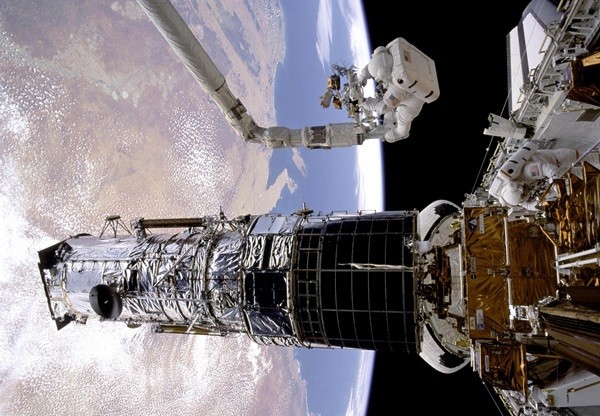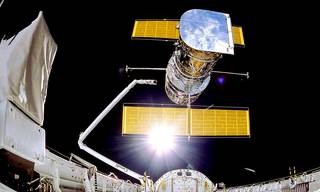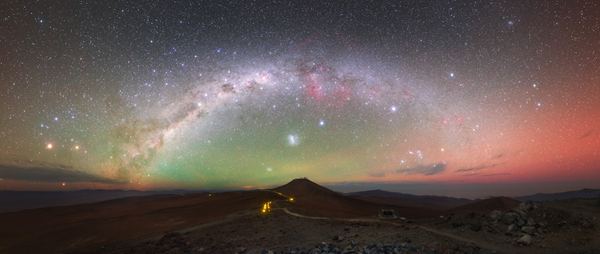News
Asteroid-Hunting Space Telescope Gets Two-Year Mission Extension
Friday, July 2nd 2021 04:39 PM
Asteroid-Hunting Space Telescope Gets Two-Year Mission Extension
Artist’s concept of NASA’s WISE spacecraft, which was an infrared-wavelength astronomical space telescope active from December 2009 to February 2011. In September 2013 the spacecraft was assigned a new mission as NEOWISE to help find near-Earth asteroids and comets. Credit: NASA/JPL-Caltech
NEOWISE has provided an estimate of the size of over 1,850 near-Earth objects, helping us better understand our nearest solar system neighbors.
For two more years, NASA’s Near-Earth Object Wide-field Infrared Survey Explorer (NEOWISE) will continue its hunt for asteroids and comets – including objects that could pose a hazard to Earth. This mission extension means NASA’s prolific near-Earth object (NEO) hunting space telescope will continue operations until June 2023.
“At NASA, we’re always looking up, surveying the sky daily to find potential hazards and exploring asteroids to help...
Read More
Read More
Hubble waylaid by computer fault
Thursday, July 1st 2021 04:31 PM
Hubble waylaid by computer fault
Astronauts repair the Hubble Space Telescope during the first servicing mission to the observatory in 1993, flown by the space shuttle Endeavour.
NASA engineers are working to diagnose a computer glitch that has put the Hubble Space Telescope out of commission.
The good news is that the core scientific instruments and the telescope itself remain in good health. And there are on-board backups for the systems suspected to be at fault, which are part of an assemblage of components called the Science Instrument Command and Data Handling (SI C&DH) unit. But so far, Hubble’s team hasn’t identified which piece of hardware is at the root of the failure. And turning on those backups will be an intricate procedure that is risker than some of the steps tried so far.
The issue emerged on June 13 when its payload computer — which manages the science instruments — ground to a halt. This prompted the main computer to put the ins...
Read More
Read More
Exceptional Heat Hits Pacific Northwest
Wednesday, June 30th 2021 05:30 PM
Exceptional Heat Hits Pacific Northwest
Extraordinary heat events occur around the planet during most summers, but the current heatwave in the Pacific Northwest is truly exceptional. In June 2021, all-time temperature records fell in multiple cities in the U.S. and Canada during a heatwave that the National Weather Service called “historic and dangerous.”
The heat began to build up late last week, and the effect is apparent in this map (above) which shows land surface temperatures on June 25 in Washington. The data show that around noon on that day, surface temperatures in Seattle reached 120°F (49°C), and the worst was yet to come. By June 26, excessive heat warnings were in place across Washington, Oregon, and Northern California.
Data for the map come from NASA’s ECOsystem Spaceborne Thermal Radiometer Experiment on Space Station (ECOSTRESS), which uses a scanning radiometer to measure thermal infrared energy emitted from Earth’s surface. Note th...
Read More
Read More
First You See It, Then You Don’t: Scientists Closer to Explaining Mars Methane Mystery
Tuesday, June 29th 2021 05:06 PM
First You See It, Then You Don’t: Scientists Closer to Explaining Mars Methane Mystery
This image was taken on March 19, 2017, by the Mars Hand Lens Imager camera on the arm of NASA’s Curiosity Rover. The image helped mission team members inspect the condition of Curiosity’s six wheels.
NASA’s Curiosity rover took this selfie on June 15, 2018, the 2,082nd Martian day, or sol, of the rover’s mission. A dust storm had reduced sunlight and visibility at the rover’s location, which was the “Duluth” drill site.
NASA’s Curiosity rover captured these drifting clouds on May 7, 2019. The 2,400th Martian day, or sol, of the mission. Curiosity used its black-and-white Navigation Cameras to take the photo.
Why do some science instruments detect the gas on the Red Planet while others don’t?
Reports of methane detections at Mars have captivated scientists and non-scientists alike. On Earth, a significant amount...
Read More
Read More
Operations Underway to Restore Payload Computer on NASA's Hubble Space Telescope
Monday, June 28th 2021 06:55 PM
Operations Underway to Restore Payload Computer on NASA's Hubble Space Telescope
The Hubble Space Telescope is deployed on April 25, 1990 from the space shuttle Discovery. Avoiding distortions of the atmosphere, Hubble has an unobstructed view peering to planets, stars and galaxies, some more than 13.4 billion light years away.
June 25, 2021 - NASA Completes Additional Tests to Diagnose Computer Problem on Hubble Space Telescope
NASA is continuing to diagnose a problem with the payload computer on the Hubble Space Telescope after completing another set of tests on June 23 and 24. The payload computer halted on June 13 and the spacecraft stopped collecting science data. The telescope itself and its science instruments remain in good health and are currently in a safe configuration.
The spacecraft has two payload computers, one of which serves as a backup, that are located on the Science Instrument and Command and Data Handling (SI C&DH) unit. There are various pieces of...
Read More
Read More
Hubble Images a Dazzling Dynamic Duo
Friday, June 25th 2021 04:22 PM
Hubble Images a Dazzling Dynamic Duo
A cataclysmic cosmic collision takes center stage in this image taken with the NASA/ESA Hubble Space Telescope. The image features the interacting galaxy pair IC 1623, which lies around 275 million light-years away in the constellation Cetus (the Whale). The two galaxies are in the final stages of merging, and astronomers expect a powerful inflow of gas to ignite a frenzied burst of star formation in the resulting compact starburst galaxy.
This interacting pair of galaxies is a familiar sight; Hubble captured IC 1623 in 2008 using two filters at optical and infrared wavelengths on the Advanced Camera for Surveys. This image incorporates data from Wide Field Camera 3, and combines observations taken in eight filters spanning infrared to ultraviolet wavelengths to reveal the finer details of IC 1623. Future observations of the galaxy pair with the NASA/ESA/CSA James Webb Space Telescope will shed more light on the process...
Read More
Read More
Observe the Southern Hemisphere's greatest deep-sky gems
Thursday, June 24th 2021 04:41 PM
Observe the Southern Hemisphere's greatest deep-sky gems
The southern Milky Way arcs across the sky at the Paranal Observatory in Chile. The Large and Small Magellanic Clouds are visible below the band of our galaxy.
A popular old saying claims, “Absence makes the heart grow fonder.” For me, this describes my love of the southern sky. I’ve spent maybe 50 nights total under it, but each one has been filled with discovery and fascination.
For this story, I’ve chosen deep-sky objects in the far south — within 30° of the South Celestial Pole. Once you point a telescope toward that region, you’ll encounter constellations you may not be familiar with: Apus, Ara, Carina, Centaurus, Circinus, Crux, Dorado, Horologium, Hydrus, Indus, Mensa, Musca, Octans, Pictor, Reticulum, Triangulum Australe, Tucana, and Volans. And although Carina, Centaurus, and Crux contain bright stars you can navigate by, luminaries in the other groups are few and far be...
Read More
Read More
NASA’s Webb Will Use Quasars to Unlock the Secrets of the Early Universe
Wednesday, June 23rd 2021 05:07 PM
NASA’s Webb Will Use Quasars to Unlock the Secrets of the Early Universe
Quasars are very bright, distant and active supermassive black holes that are millions to billions of times the mass of the Sun. Typically located at the centers of galaxies, they feed on infalling matter and unleash fantastic torrents of radiation. Among the brightest objects in the universe, a quasar’s light outshines that of all the stars in its host galaxy combined, and its jets and winds shape the galaxy in which it resides.
This is an artist's concept of a galaxy with a brilliant quasar at its center. A quasar is a very bright, distant and active supermassive black hole that is millions to billions of times the mass of the Sun. Among the brightest objects in the universe, a quasar’s light outshines that of all the stars in its host galaxy combined. Quasars feed on infalling matter and unleash torrents of winds and radiation, shaping the galaxies in which they reside. Using the unique ca...
Read More
Read More
Major Ocean-Observing Satellite Starts Providing Science Data
Tuesday, June 22nd 2021 04:42 PM
Major Ocean-Observing Satellite Starts Providing Science Data
This map shows sea level measured by the Sentinel-6 Michael Freilich satellite from June 5 to15. Red areas are regions where sea level is higher than normal, and blue areas indicate areas where it's lower than normal. Credit: NASA Earth Observatory
Sentinel-6 Michael Freilich, the latest spacecraft to monitor sea surface height, releases its first science measurements to users.
After six months of check-out and calibration in orbit, the Sentinel-6 Michael Freilich satellite will make its first two data streams available to the public on June 22. It launched from Vandenberg Air Force Base in California on Nov. 21, 2020, and is a U.S.-European collaboration to measure sea surface height and other key ocean features, such as ocean surface wind speed and wave height.
One of the sea surface height data streams that will be released is accurate to 2.3 inches (5.8 centimeters) and will be available within hours of when...
Read More
Read More
The Sky This Week: Welcome, summer!
Monday, June 21st 2021 04:31 PM
The Sky This Week: Welcome, summer!
Summer evening: The summer solstice occurs June 20, bringing the longest day of the year and kicking off the summer season in the Northern Hemisphere.
Friday, June 18
An hour after sunset, the bright red star Antares, located in Scorprius, is visible above the southern horizon. This magnitude 1 star is located in a rich region of the sky rife with star clusters, including M4, a globular cluster less than 1.5° due west of Antares. M4 is an easy magnitude 5.6 and spans about 36'. At just 7,200 light-years from Earth, it’s one of the nearest globular clusters to our planet. Many observers can see a straight “bar” structure of 11th-magnitude stars within the cluster’s core.
Wait a little longer, and two open clusters — M6 and M7 — will appear as Scorpius’ tail clears the horizon. These are much younger, looser groupings of stars than M4, and excellent binocular targets for even beginning observers...
Read More
Read More









